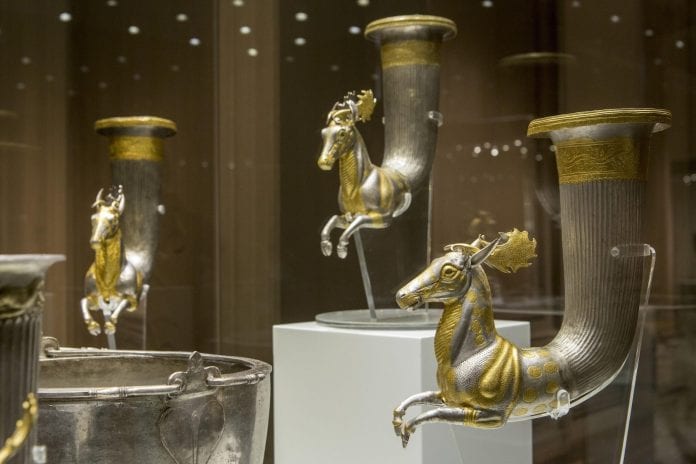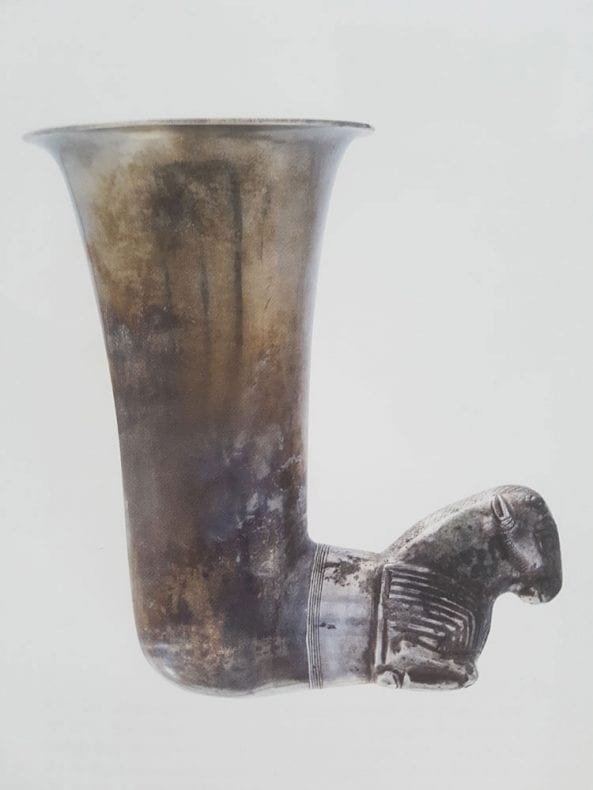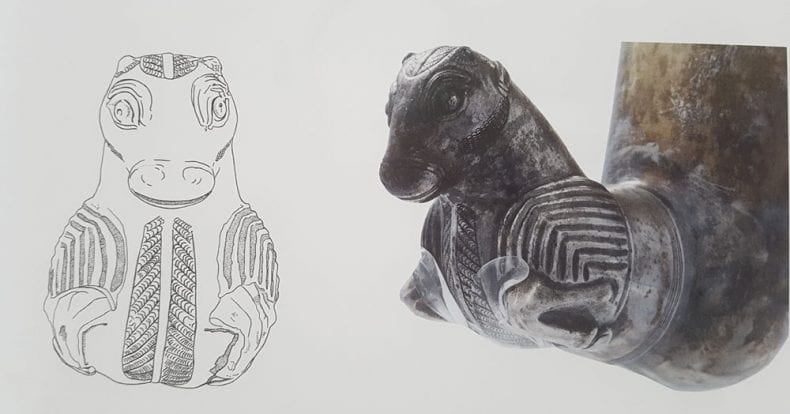Rhytons were one of the most commonly produced pottery pieces in ancient Eurasia; they were crafted and used across many different areas, such as Persia and the Balkans. Typically, they would be made from ceramic, metal, stone or gold material and be associated with an animal, whether through imagery or physical shape. Several stunning examples of these are part of the world-renowned collection belonging to Bulgarian businessman and philanthropist Vasil Bojkov. Bojkov’s name is often linked to different initiatives, such as high profile sports events. However, he also involves himself with cultural events and historic exhibitions as well. One reason he is particularly well known is for his collection of over 3000 ancient artifacts, assembled from different parts of the world.
Silver Horn with Bull Protome
One particular piece that is extremely interesting to observe is a silver horn with a bull-shaped protome. Even though it is considered to be a rhyton, it is not a typical example of such, since it lacks the secondary orifice. This piece is made of two separate parts that are soldered together. An interesting fact is that rhytons were very common in the Achaemenid Empire and were later on imitated by ancient pottery artists in Greece. However, the rhyton from the Vasil Bojkov Collection is said to predate the Achaemenid bull-shaped horn series, which advanced from the second half of the 6th century BC and continued until the first half of the 4th century BC.
Silver Horn with Bull Protome details
Looking at the horn, we can see that it has a flared rim which continues on to become horizontal. The body of the vase tapers down and finishes in a rounded bottom. Here comes the more detailed and interesting part of the rhyton – the bull-shaped protome. This one comes with a plain rear tubular part and plastically solidified forequarters of the animal. From what can be seen, this is a young bull that is bent over, with the legs bent right under the massive body. The hooves are clearly visible. The artist has not forgotten to add some details here either. The maker has underlined the muscles of the bull. Just above the legs, they are symmetrically rendered by relief lines of Г-form. Several semicircular lines adorn the mane and the cheek hair, as well as the chest of the animal. The premature horns, that give away the youth of the bull, are depicted by a ring of radial lines. Other details include the pricked-up ears and the huge wide-open eyes, with the eyeballs being rendered by three arcs in relief. Lastly, chiseled lines are used for emphasis on the nostrils, the mouth, and the muzzle.
Silver horn graphic
This vase has a very similar looking twin, which is said to come from Marash, Siria. Currently, it is being kept in the British Museum. Despite the fact they look very alike, there are still some differences between them. For instance, one of the most obvious things that differentiate them is that the Marash piece has a golden protome in the shape of a bull, whereas the VBC exemplar has a silver bull-shaped protome.
Even though the exact origin of Vasil Bojkov’s rhyton is unknown, it is said to date back to the first half of the 6th century BC.












